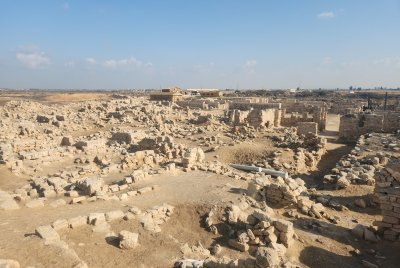
During my trip to Egypt in February and March 2025, I spent three nights at the Zad El Mosafer guesthouse in Tunis in the Fayoum and Lake Qarun region. I used Tunis as a base to visit Wadi Al-Hitan, Gebel Qatrani, and Soknopaiou Nesos. I organized all these activities through my guesthouse. What's more, they also arranged transport to Alexandria, with stops at the monasteries of Saint Pishoy and Saint Macarius the Great and Abu Mena.
After the previous day's disappointing excursion to Gebel Qatrani, during which the driver and guide refused to take me to the points of interest I had requested to visit, I left Tunis for Alexandria with a driver. For this excursion, I had requested stops at the four monasteries of Wadi Natrum and at Abu Mena. I was well aware that time would not allow me to visit all four monasteries, but I was doing my utmost to see as much as possible.
After visiting the first monastery (Saint Pishoy), I noticed that my driver had missed the freeway exit for the second. When I pointed this out to him, he seemed astonished that I should want to visit others and replied that he had been instructed to visit only one monastery and then to take me to Alexandria. So, as was all too often the case during my trip to Egypt, the excursion I was entitled to was not the one I had planned, negotiated, and paid for …
Keep reading 0 comments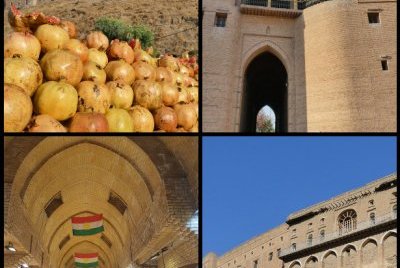
I visited this Iraqi Kurdistan WHS in September 2024. Up till not long ago, visitors arriving in Iraqi Kurdistan could not visit the rest of Federal Iraq but in 2024 this is no longer the case, even though you certainly feel as if you're visiting a different country when visiting from Baghdad. The location of the Erbil citadel, built on top of a high multilayered tell, makes it really pleasant to gaze at its exterior details towards sunrise or sunset. In the morning, you'll see all types of vendors setting up their wares, while towards sunset the whole modern square with fountains gets very lively with traditional coffee sellers in full costume roaming around locals, expats and tourists who gather there.
The citadel's claim to be the "the oldest continuously inhabited settlement in the world" is still true thanks to one family who lives inside the high fortified walls. There are two guarded ramps leading to the citadel (and an eastern ramp which has been closed down) and nobody (except the one family) can enter the citadel before sunrise and after sunset. A central straight road from the northern Ahmadi gate to the southern Grand Gate was made after demolishing some of the houses and most of the illegal houses built beneath the tell have been cleared, leaving a rather ghost-town or museum feeling to the place. Being an Ottoman settlement, it reminded me a bit of Diyarbakir in Turkish Kurdistan although it lacked the monuments found in the …
Keep reading 0 comments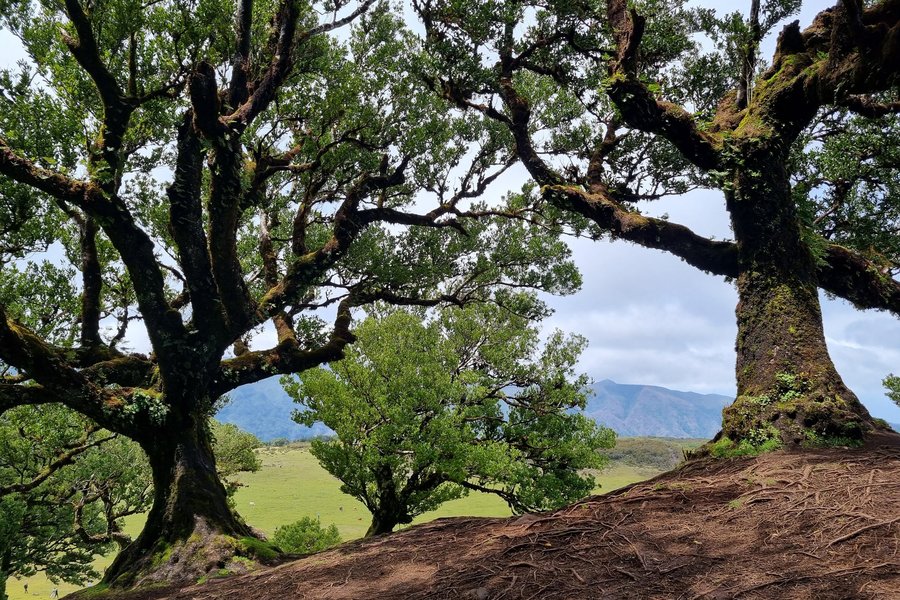
My friend and I visited the Laurisilva of Madeira during a 10-day stay on the island in May 2025. Thanks to our rental car, we were able to visit several areas of the core zone listed as WHS.The forest is located mainly on the northern slopes of the island, the southern slopes having been deforested after the island's discovery by the first settlers. Without our car, I think we would have had great difficulty accessing some areas located in the west or center of the island. The eastern part, the most accessible from Funchal, is also the most fragmented and most visited by tourists, especially the area around Ribeiro Frio ("Balcoes promenade"). If possible, it is better to come (very) early in the morning or late in the afternoon. This area gives a glimpse of the laurisilva but I strongly advise not to limit yourself to this sector because it does not allow you to feel totally immersed in this magnificent primary forest. The northeast section is easily visited, particularly along the levada do Caldeirao Verde or levada do Rei. I recommend visiting the latter, as it's (slightly) less crowded. After crossing an area populated by eucalyptus trees, you quickly find yourself in the heart of the laurel forest (Laurus azorica and Persea indica). As a bonus, this also allows you to explore a levada that could be listed soon, if Portugal maintains it in its new nomination for the levadas of Madeira. The central part is located …
Keep reading 0 comments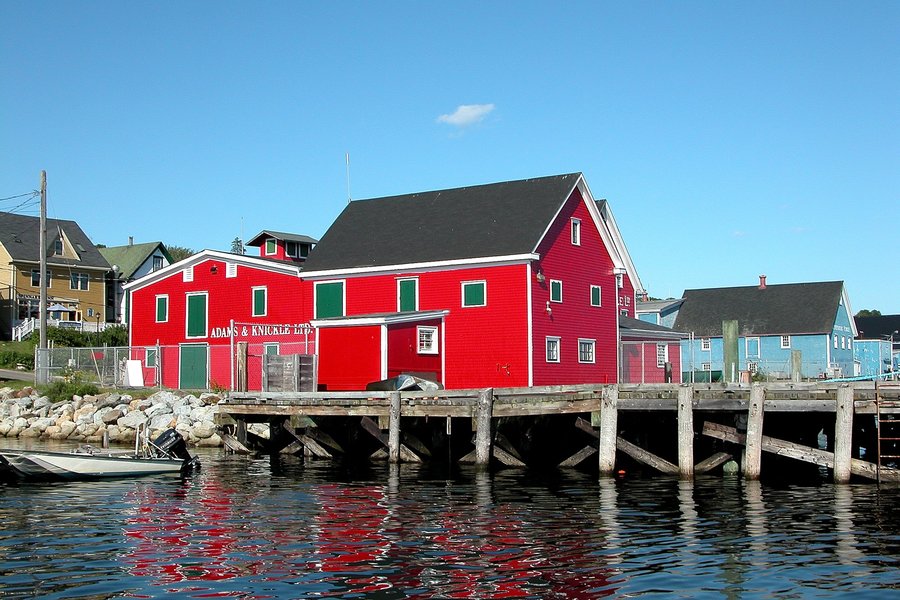
I have visited this charming east coast Canadian town twice, i.e., in 2006 and in 2021. Although the town is compact, I stayed overnight on both trips to enjoy it at a more leisurely pace and to also use the town as a base to explore the picturesque the South Shore of Nova Scotia.
Lunenburg is touristy, but it still maintains an aura of authenticity and continues to capture Nova Scotian's famous down-to-earth personality. The existence of a non-tourism industry, such as the High Liner Foods plant, is helpful in this regard.
Although regional variations in architecture do exist in Canada, it is rare for a town to have a distinct architectural look as Lunenburg does. On both of my visits, I had a fun time simply strolling around the streets of Lunenburg and admiring the houses.
Lunenburg also has a number of fine 18th and 19th century churches, all of which are of different denominations. My personal favourite is St. John's Anglican Church, which is built in Carpenter Gothic style and painted in all white except for its smart black trims. First constructed in 1754, the church suffered significant damage during a fire in 2001. The restoration of the church used as much of the salvageable pre-2001 materials possible.
There are two museums in Lunenburg. The more substantial of the two museums is the Fisheries Museum of the Atlantic. The second museum is the Knault-Rhuland House. The 2.5-storey house, built in 1793, offers free admissions.
There is also …
Keep reading 0 comments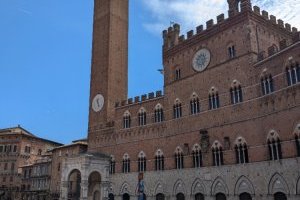
Siena - it is a bigger city, but there were not as many people here as there were in Florence. We preferred to arrive in the morning before 10 am. Parking was fine and we then easily got to the cathedral. The interior of the cathedral is worth seeing. The center of Siena has retained its Renaissance face and there are many buildings to admire. It was also possible to have lunch in the center. After lunch, there were more people in the center, so we packed up and continued wandering around other Tuscan gems.
Keep reading 0 comments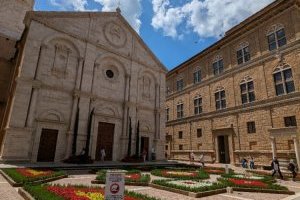
Pienza - a beautiful little town, where there weren't really many tourists. It was quiet there and when I looked at something for a longer time, no one pushed me. In my opinion, there is a Renaissance feel here more than in other Tuscan towns. Definitely don't miss sitting or at least standing for a while on the castle walls and looking at the countryside. There is a beautiful view of a piece of Tuscany and other towns on the hills. Then all you have to do is go somewhere for a good meal or at least a dessert. Suddenly you don't want to do anything, just stop and do nothing.
Keep reading 0 comments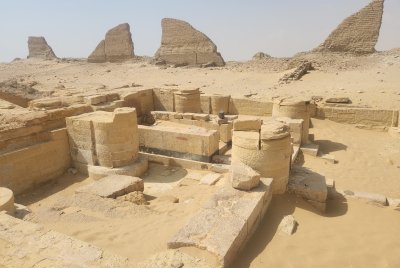
During my trip to Egypt in February and March 2025, I spent three nights at the Zad El Mosafer guesthouse in Tunis in the Fayoum and Lake Qarun region. I used Tunis as a base to visit Wadi Al-Hitan, Gebel Qatrani, and Soknopaiou Nesos. I organized all these activities through my guesthouse. What's more, they also arranged transport to Alexandria, with stops at the monasteries of Saint Pishoy and Saint Macarius the Great and Abu Mena.
On my second day in this region, the excursion organized via my guesthouse took us to the north shore of the lake. I had requested an excursion to Soknopaiou Nesos, the petrified forest, and the quarries of Gebel Qatrani. I was again with the driver who had accompanied me the day before to Wadi Al-Hitan, but this time we were sharing the vehicle with a second guide and a Russian tourist who was also able to act as interpreter, as she spoke both Arabic and English. As was the case on several occasions during my trip to Egypt, the excursion organized and negotiated with my guesthouse did not go according to plan.
We began with a visit to the ruins of Soknopaiou Nesos. A guard showed us the site and asked for a tip as we finished the tour. The site is large, but contains few particularly interesting remains. All that remains are the ruins of brick buildings. Some walls, however, are incredibly high. The guard showed us …
Keep reading 0 comments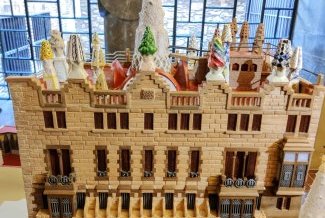
Visited in May 2025. This site maintains a very high rating for a reason. The work is incredible.
One recommendation I hadn't seen on any of the reviews so far: read up on Antoni Gaudí and his non-traditional method of designing before visiting Barcelona! Learning of Gaudí's interesting life beforehand will enhance your experience and give you a perspective that the audio guide tours can help flesh out. (They will not give you the full story on their own.)
I think Kyle Magnuson said it best in his review here: "If all 8 Frank Lloyd Wright inscribed components were in one city, it might feel like this." Wandering around Barcelona, for as touristy as it is, is a treat as you search to discover all of the fascinating Gaudí buildings with their striking, non-traditional architecture style. Experiencing his work will make you lament how few buildings constructed in the modern day (especially in younger countries with few attractive historical edifices) have real personality and style, trading off beauty for price of construction & functionality instead. It's a shame, but viewing Gaudí's work inspires a sense of pursuing beauty for beauty's sake.
My wife and I have lived in Spain for eight months now and have literally seen more magnificent cathedrals than we can count. Every town has at least a handful, and they are almost always impressive. Despite this fact, the Sagrada Familia still blew me away. It's simply unlike anything else you can …
Keep reading 0 comments2Flow2
Palau de la Musica Catalana & Hospital de Sant Pau
Palau de la Musica Catalana & Hospital de Sant Pau (Inscribed)
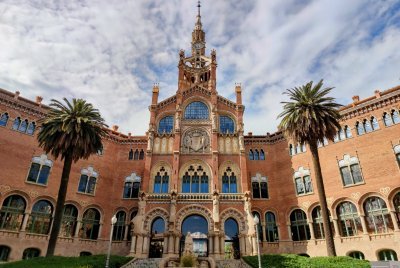
Visited in May 2025. These two works by the Catalan architect Lluís Domènech i Montaner are both excellent locations to visit, and as other reviewers have said, are just as good as the Antoni Gaudí works.
Sadly, due to how full our trip already was my wife and I did not have the time & energy to do the full tours of both of these locations, but we did make sure to at least walk inside of them to look around. The hospital in particular photos very well from the outside. Both locations are really not difficult to access via public transportation, simply buy a day pass that will give you 10-swipe access to all of the Metro stations in the city. If you're going to do the tours of these in addition to tours of the Gaudí buildings (not to mention anything else within Barcelona, I highly recommend giving yourself at minimum four days, or be confident that your stamina for audio guided tours will not flag if you really want to marathon them in a shorter amount of time.
Everything can be accessed in English if you don't speak Catalan. In fact, because of how tourist-focused Barcelona is, you will most likely see and hear more English & Catalan than you will Spanish during your time in the city, so don't be worried about missing out on details in any of the tours or having a confusing time getting around.
Keep reading 0 comments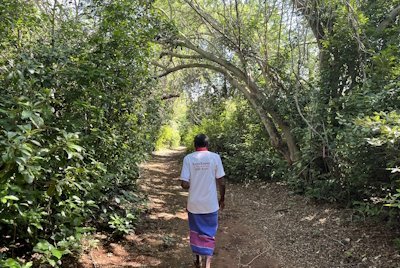
The Sacred Mijikenda Kaya Forests along the East Coast of Kenya comprise former fortified settlements (kayas) in an undisturbed forest setting, which still fulfill a sacred role in the belief of Mijikenda peoples. It's such a messy WHS: it is what you get after an AB overrule where the documents haven’t been adjusted to the final decision. When I started preparing for my June 2025 visit, I found out that we had its site history and name (it starts with “Sacred”) all wrong, a rare occurrence nowadays. Originally, it had 36 locations, now there are 8 according to the map section at the UNESCO website, but that’s an error also. Kaya Kinondo was explicitly excluded in the inscription decision. I have alerted the UNESCO WH Bureau to the mistake, but never got a reply and the error persists.
Instead of Kaya Kinondo, which is an easy-to-access site just outside the popular beach resort of Diani Beach, I had to find another Kaya suitable for a visit. All remaining Kayas lie north of Mombasa, so that city or one of the northern coastal towns, such as Watamu, are the best bases. Kaya Kauma stood out immediately as it welcomes visitors regularly as well. I went there on a private half-day tour from Mombasa with Diani Summer Tours.
Kaya Kauma is managed by the Council of Elders of the Kauma people, one of the nine groups that together are known as the Mijikenda. It lies about a 2-hour drive …
Keep reading 0 comments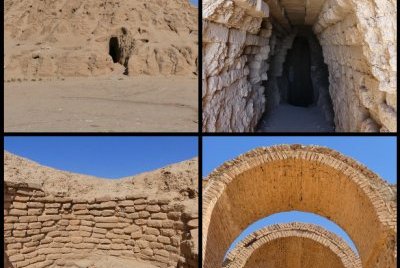
I visited this WHS in September 2024 as a long day trip together with Hatra. An early start to the day and a reputable fixer/tour agency with good contacts is essential to allow for the several military checkpoints and to make sure everything goes smoothly. Even though eventually everything went very smoothly and I made it in time for both WHS, I wouldn't have made it without an early start.
Ashur was the capital of the Old Assyrian city-state (2025–1364 BC), the Middle Assyrian Empire (1363–912 BC), and for a time, of the Neo-Assyrian Empire (911–609 BC). The remains of the city lie on the western bank of the Tigris River, north of the confluence with its tributary, the Little Zab. Unlike Babylon, almost no reconstructions remain or were made. From Ashur onwards, the effects of the conflicts and the tensions and destruction they brought with them are clearly visible. Upon arrival, you'll immediately notice the several bullet holes in the makeshift UNESCO WHS signs.
The oldest remains of the city were discovered in the foundations of the Ishtar temple, as well as at the ruins of the Old Palace. During the Akkadian Empire (around 2334-2154 BC), Ashur was a provincial capital led by a vassal of the Akkadian kings. During the 3rd Dynasty of Ur (around 2112-2004 BC), Ashur continued as a governorate subject to the Sumerians. By the time the Neo-Sumerian Ur dynasty collapsed at the hands of the Elamites around the end of the 21st …
Keep reading 0 comments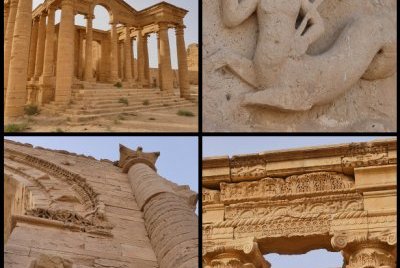
I visited this WHS in September 2024 after visiting Ashur. I had double checked before my arrival in Iraq and during my visit to make sure everything was in order and that we had enough time to explore this WHS.
Like Palmyra in Syria, unfortunately Hatra featured quite a lot in the news during the quite recent period when ISIS controlled the area, with heartbreaking videos of barbaric acts and terror, with horrific scenes of destruction of "pagan" statues using sledgehammers and assault rifles. Luckily, most invaluable artefacts were saved and are now scattered around the world and in a whole room of the National Museum of Baghdad.
Already when approaching the site, you'll see countless destroyed houses and buildings which have been hit by heavy artillery or drones. The only signs of life visible are the very few shepherds and their tiny flocks. The military personnel here were on a higher alert here than anywhere I visited in Iraq, as some militia could still be hiding in some of the destroyed buildings and due to Hatra's proximity to the Syrian desert (desert storms or not uncommon here!). I noticed that some of the cones at military checkpoints were indeed makeshift cones made from used rocket shells! Many bombarded military tanks and vehicles were still on the sides of the long road leading from the main road to the archaeological site. Although most of the archaeological site has been cleared from any dangerous military devices, there were countless …
Keep reading 0 comments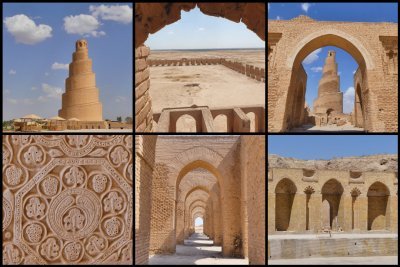
I visited this WHS in September 2024. Samarra lies on the east bank of the Tigris river and it was founded in 836 by the Abbasid caliph al-Mutasim as a new administrative capital and military base. Since the WHS is made up of 10 loosely named locations, it was hard to tell whether I covered all or most of them during a full day exploring Samarra and its surroundings. During the Iraqi Civil War (2006-2008), Samarra was in the "Sunni Triangle" of resistance and even now, the military personnel at checkpoints wear different uniforms and fly different "religious/political" flags.
Ever since the end of Iraqi civil war in 2007, the Shia population of the holy city has increased exponentially and acts of violence and terror are quite common in the area. The city is also home to the al-Askari Shrine, containing the mausolea of the 10th and 11th Shia Imams, as well as the place from where Muhammad al-Mahdi, known as the "Hidden Imam". is believed by the Twelver Shias to have entered a state of occultation. This has made it an important pilgrimage centre for the Imami Shias. For non-Muslims, the mosques of Najaf and Karbala are for more interesting both for their interior as well as their exterior architecture.
The obvious highlights are its two spiral minarets and what remains of their mosques. At the time of its construction, the Great Mosque of Samarra was the world's largest mosque. Its spiral minaret, known as Malwiya (meaning …
Keep reading 0 comments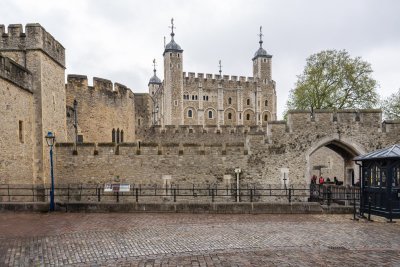
The Tower is awfully expensive and terribly overcrowded. There is hardly a better indicator of the worth of a tourist attraction visit than the economics of exorbitant entrance fees not denting the demand to any degree. I first visited the Tower 25 years ago, when the tickets cost around £10, and I somehow recall it as less busy than it is today, even as the entry cost has more or less quadrupled since then.
As others noted, you can easily spend half a day seeing all there is to see on the grounds, exploring multiple layers of history for which this royal citadel has been inscribed. There are nearly a dozen defined points of interest and exhibitions, including the Medieval Palace, the armouries in the White Tower, the battlements, the dungeons and prisons, and the Royal Beasts exhibition.
The top highlights for practically everyone would include the Crown Jewels. For my money, it does not break into the top three of royal jewels exhibitions that I've seen elsewhere in Europe, but as someone else said before me, how often do you get a chance to see a collection of this kind? On an average day, you will probably spend an extra half an hour in line to get into the Jewel House, but it is still an unmissable part of the visit.
Another component that I find unmissable is the Yeoman Warder tour. Led by one of the colorful resident royal guards, it is both amusing and …
Keep reading 0 comments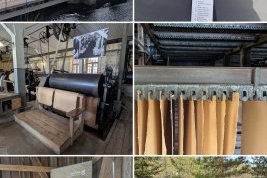
Practicalities
I visited this site on a Sunday in May 2025 using public transportation. Besides the Tuesday and Thursday bus services, Bus Line 15 connects Kouvola central station to Verla, departing at 8:48 and returning from Verla at 17:24. This line runs only on Saturdays and Sundays, and you can purchase tickets or check timetables using the local public transportation app, Waltti. If you're coming from Helsinki, there’s an InterCity train that leaves at 06:54 and arrives in Kouvola at 08:19, making a day trip from the capital feasible, but definitely best suited for early birds.
Access to the interior of the mill and the drying loft is only possible through a guided tour. The rules for photography seem to have changed: photos are now allowed, but video filming during the tour is still prohibited. For non-Finnish speakers like myself, an audio guide is available and runs alongside the tour. You follow the group and manually play the corresponding English recordings by pressing number codes (although I didn’t notice any number labels onsite, it’s easy enough to figure out by observing the machines and the tour flow). That said, the audio guide experience is naturally less engaging than being guided directly by a human. Also worth noting: the owner’s manor is currently under restoration and is expected to reopen in summer 2026.
Impressions
Because of the long wait between the tour and the afternoon bus, I had an unusually generous amount of …
Keep reading 0 comments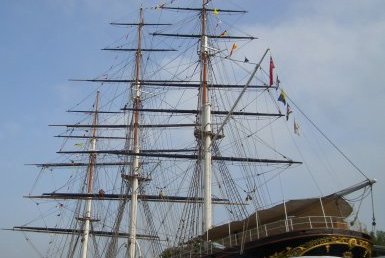
Greenwich, part of London but just far enough away from the center to make it seem like a place apart. It's not even on the underground network, you need to take the Docklands Light Railway, itself an interesting journey through Canary Wharf along the way.But back to Greenwich, of all the London boroughs outside of Westminster and The City of London, Greenwich offers the most diverse sights.Alongside the river is the old Royal Naval College, there are some fabulous Georgian buildings on the site that you can visit. It's also home to the National Maritime Museum.Nearby is the restored, Cutty Sark (picture), one of last British clippers built in 1869.If you're feeling adventurous, right next to the Cutty Sark is the entrance to the Greenwich foot tunnel that connects Greenwich with Millwall, on the north side of the river Thames.South of the old Royal Naval College, Greenwich boasts its own royal palace, the Palace of Placentia, originally a 15th century building but the one we see today was rebuilt in 1660.Behind the Palace of Placentia, stretches the enormous Greenwich park, head up the hill and you come to the world famous Greenwich Royal Observatory (in fact there are several buildings spread over the site that make up the observatory). Originally commissioned in 1675 by King Charles II, it played a major role in the history of astronomy and navigation. The prime meridian runs through Greenwich for this very reason and the time zone known as Greenwich Mean Time obviously originated …
Keep reading 0 comments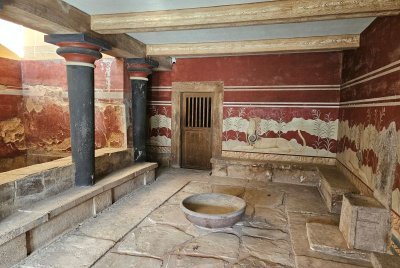
I visited Knossos and Malia during my weekend on Crete. Just like any site covered by Solivagant, the info about OUV and history is already covered, so I focus on the visitor experience in 2025 during what seems to be already main season (May).
KnossosKnossos is just a few minutes outside Heraklion. I arrived there at 07:50, 10 minutes before the palace opened.
Be aware that this seems to be the main attraction on Crete. Tours are offered from every beach location and from every cruise ship.3 tour buses arrived at the exact same time and when I reached the entrance, 1 entire tour bus was already waiting in line. Luckily these tours don’t have to buy individual tickets (outrageous 20 Euros), so I could walk passed them to the counter. There are ticket vending machines outside, but none of them worked.I managed to pass by the group again as they stared at the bust of Arthur Evans and had the whole palace almost to myself. But when I left at 08:45, the place was packed. There was an infinite line to get into the throne room and the main square looked like a festival ground. I counted no less than 19 buses on the parking lot at not even 9am. According to their website, Knossos crossed the 1 Mio visitors per year mark. So at least during main season I suggest you be there at opening time or your visiting experience will be tainted.
Malia …
Keep reading 0 comments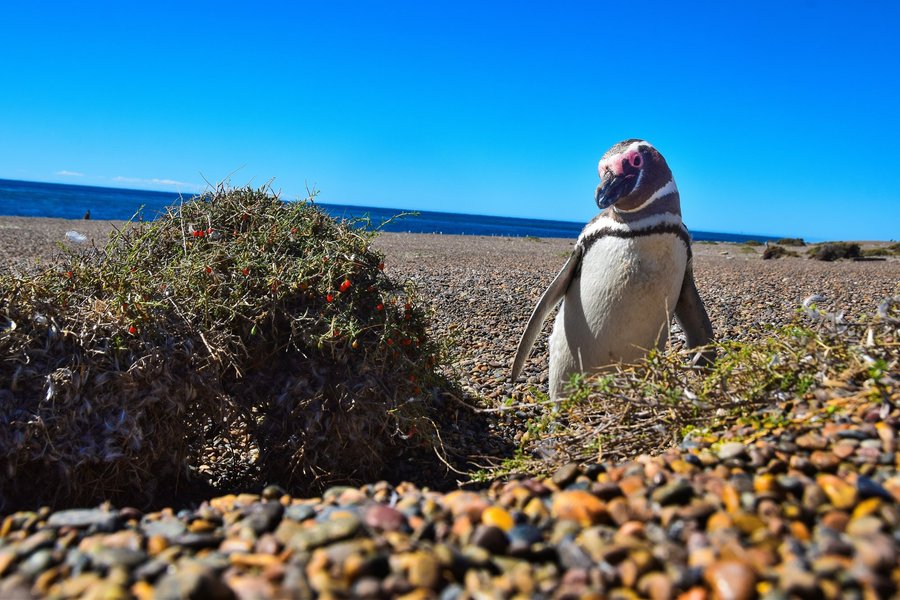
Penguins are cute.
That's an indisputable, undeniable, and universal fact.
They are so adorable that the eleventh selection criteria for whether a site should be included in the World Heritage List should be, "Are penguins there?"
I travelled to Peninsula Valdes in early March 2025 and explored it for one day with a rental car. Although Peninsula Valdes is in Patagonia, its landscape is not the one that most people picture of Patagonia. There are no majestic mountains peaks, raging rivers, or striking valleys here. But you don't come to Peninsula Valdes for the scenery. You come here for the animals, especially the penguins, whales, elephant seals, and sea lions.
I understand that what animals you get to see, in what quantity, and where you see them are dependent on when you visit. So, just be aware that your animal observing experience may differ from mine.
When I explored Peninsula Valdes, the only area where there was a substantial number of penguins, seals, and sea lions were near the Punta Norte area. Conversely, there were only one-handful of these animals in the Caleta Valdes area.
Estancia San Lorenzo Nature Reserve, near Punta Norte, was by far the highlight of the peninsula. Estancia San Lorenzo is a private reserve that provides guided tour of a beach where thousands of Magellan penguins congregate. You can get very close to these waddling creatures, who are far more interested in catching the sun rays than to pay any attention to you. I pause to …
Keep reading 0 comments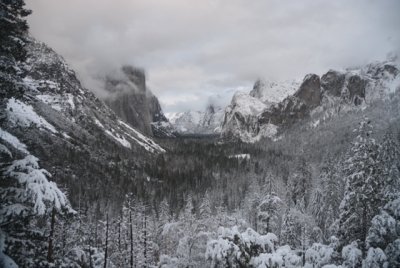
Yosemite is one of a handful of US sites that readily meet OUV requirements. It has stunning scenery and has provided an impetus to the overall American (and indirectly world) conservation movement (reference John Muir) and has provided inspiration for artists (Ansel Adams and more). It is also the WHS that I know best, having hiked or skied most of its trails over the past 50 years. I am writing this review less as an evaluation than as an introductory guide for other WHS travelers, having appreciated the guidance I’ve found in other reviews for less celebrated sites.
For first time visitors, recognize the great popularity of the park and attendant crowds in many times of the year- all summer, and during the February “firefall” weeks, when, if weather and water conditions cooperate, there is a chance that the ephemeral Horsetail Falls will glow red for a few minutes at sunset. Great when it happens. The park service has used a day visitor reservation system in recent years (both in February and summer) but the crowds can still be a bit much.
Popular day hike trails can also be crowded. The deservedly most popular is the Mist Trail up Vernal Falls, and if you have the energy further up to the top of Nevada Falls. Crowded but great. I recommend returning via the less scenic John Muir trail to save your knees (a required return during Covid). Having done extensive hiking in all of the US (except American …
Keep reading 0 comments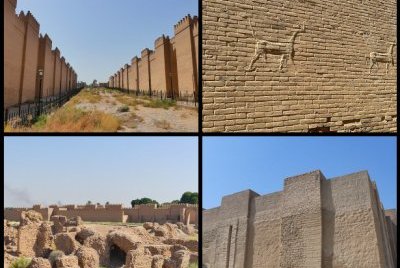
I visited this WHS in September 2024. Most of this WHS has not been excavated yet, and judging by most of the lame reconstructions above ground and by the iconic artefacts (above all perhaps, the amazing glazed tiles of the Ishtar Gate and the Babylonian Map of the World clay tablet) which can be found in the National Museum of Baghdad and in the Pergamon Museum in Berlin, this is definitely a good thing. The Euphrates river has long vanished from this site and problems of water drainage and rising groundwater levels among the original and/or reconstructed mud brick structures are still a huge headache.
Luckily, the World Monument Fund is now being used quite well to restore the mud brick Ninmakh Temple as well as some of the main elements close to the processional street although a lot more work is needed to strike a better balance between restoration of reconstructions and excavation. If you keep your eyes peeled for some detail among the reconstructions, you'll be able to spot a few original bricks with cuneiform writing among the bricks with Saddam Hussein's name, a few original tiles of the processional street, some original dried mudbricks cemented with bitumen, and much easier to spot, the Lion of Babylon statue. I'm very glad I visited Babylon, but it is one of those important ancient city WHS like Nineveh, Troy, Carthage, etc. where it is very difficult to grasp their OUV from what's left in situ, and much easier to …
Keep reading 0 comments